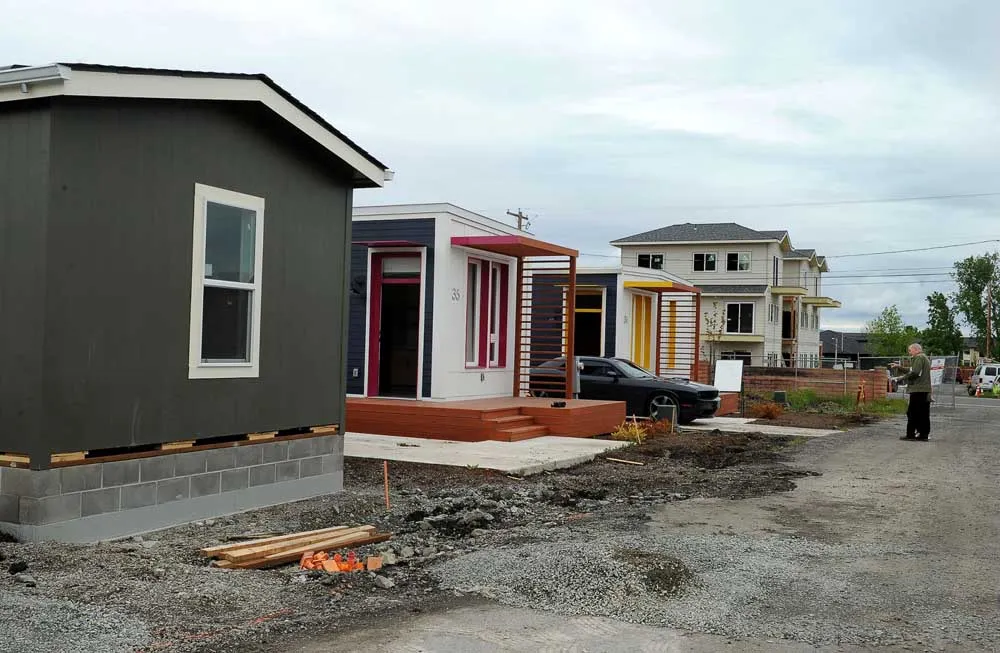PORTLAND, Ore. – As Oregon grapples with rising homelessness and eviction filings, the very organizations meant to keep people housed and supported are being forced to slash staff and scale back services. Nonprofits and advocacy groups from Portland to Salem, Monmouth to Eugene say steep cuts in the state’s housing budget are leaving them unable to meet the demand.
Fewer Staff, Fewer Families Served
At the Springfield Eugene Tenant Association, executive director Tim Morris said his group has cut its full-time staff from six to two. Last year the nonprofit supported 4,000 households. Now, it can only serve about 2,200.
“We’re seeing the most vulnerable folks getting squeezed on both ends,” Morris said. “The cost of everything—housing, food, basic needs—is rising, while prevention dollars like rent assistance and legal services are being reduced dramatically. We are approaching a future in which tenants are just alone and won’t have folks in their corner.”
The cuts follow the Legislature’s passage of a new housing budget. While the overall plan tops $2.6 billion, funding for the Oregon Housing and Community Services Department was reduced by about $1 billion over the next two years.
Major Portland Nonprofits Hit Hard
In Portland, the Community Alliance of Tenants, a renter advocacy group, laid off nearly its entire staff—28 people—after its state funding dropped by $1.4 million, a 66% reduction. The group now warns on its website that response times will be slow and is asking the public for donations.
The Oregon Law Center, which provides free eviction defense to low-income renters, has lost more than a third of its staff. Half of the positions in its eviction defense program have been cut.
“We will continue to help as many households as we can,” said Sybil Hebb, the center’s director of legislative advocacy. “But with fewer resources and very limited rental assistance, more people will be evicted and pushed onto the streets. We are really worried—our most vulnerable neighbors will be the most affected: families with children, domestic violence survivors, and seniors.”
Cuts Extend Beyond the Cities
The crisis isn’t confined to Portland. In Marion and Polk counties, Church at the Park cut 29 positions, including 16 layoffs, after its state contract was reduced by 20%.
“Each person leaving our team represents someone who has been creating value and encouragement with our unhoused neighbors and their fellow team members,” wrote DJ Vincent, the nonprofit’s founding pastor.
The group continues to operate five shelters and a safe parking program that provides designated spots for people living in their vehicles. But Vincent said every department has been impacted.
In Redmond, Rick Russell, pastor at Mountain View Fellowship and director of a safe parking program, said he’s waiting to hear how much money the program will lose. For now, they are leaving positions unfilled.
“I expect it will be painful,” Russell said. “I hope it’s not brutal.”
Political and Economic Tensions
The Legislature’s reductions were shaped by a grim revenue forecast released in May, which projected hundreds of millions less in available funds due to slow economic growth and trade tensions.
Democrats point to steep federal cuts under the Trump administration, saying Oregon’s budget was squeezed by the downsizing of national social service spending. Republicans, meanwhile, blame Democratic leadership for approving housing policies that required what they argue was unsustainable state spending.
What’s clear is that housing pressures have not eased. The number of housing permits issued in Oregon last year fell to the lowest level in more than a decade. Evictions and visible homelessness continue to climb.
Shelter vs. Prevention
The budget does include new investments. Nearly $205 million was allocated toward homeless shelters, creating a state-funded shelter initiative backed by Gov. Tina Kotek. But funding for eviction prevention—such as rent assistance and legal services—was cut by about $100 million.
That gap worries advocates, who argue that shelters cannot replace the preventative work that keeps people in stable housing.
“The budget will provide more stable shelter funding and investments to boost housing supply,” said Jessie Schirrick, spokesperson for the Oregon Housing and Community Services Department. “But it also came with reductions. Difficult decisions need to be made and how we move forward matters. We are insistent on a housing future that makes everyday life better for the people we serve.”
Kotek’s office has not commented directly on the reductions. The governor had requested more funding for prevention services, which remain a cornerstone of her housing strategy.
Rising Need, Shrinking Safety Net
The timing of the cuts couldn’t be worse, advocates say. The Oregon Food Bank has already reported record demand at food pantries statewide, and shelter waitlists continue to grow. Between fiscal year 2023 and 2024, the Oregon Food Bank saw a 31% increase in pantry visits—the largest in its history.
Housing providers fear the same trend: more families in crisis, fewer staff to help them, and less money for rental assistance that could keep them housed.
A Growing Strain on Communities
Advocates warn that the cuts may not only push more people into homelessness but also increase pressure on already stretched city and county services.
“We helped more than 10,000 households last year,” Hebb of the Oregon Law Center said. “Without adequate support, thousands of those families could face eviction without legal help, and many will end up on the streets.”
For Morris in Eugene, the reality is stark. “We can’t sugarcoat this. There are going to be people who don’t get help who would have last year,” he said.
Waiting for Relief
Nonprofits say they will continue to lean on volunteers, donors, and local partnerships to stretch their resources. But most agree philanthropy alone cannot fill a billion-dollar gap.
As Oregon enters another winter with record homelessness, the question is whether the state can balance short-term shelter needs with long-term prevention. For now, the people on the frontlines fear they are being asked to do more with less—at the very moment when more Oregonians need help than ever.












Leave a Reply